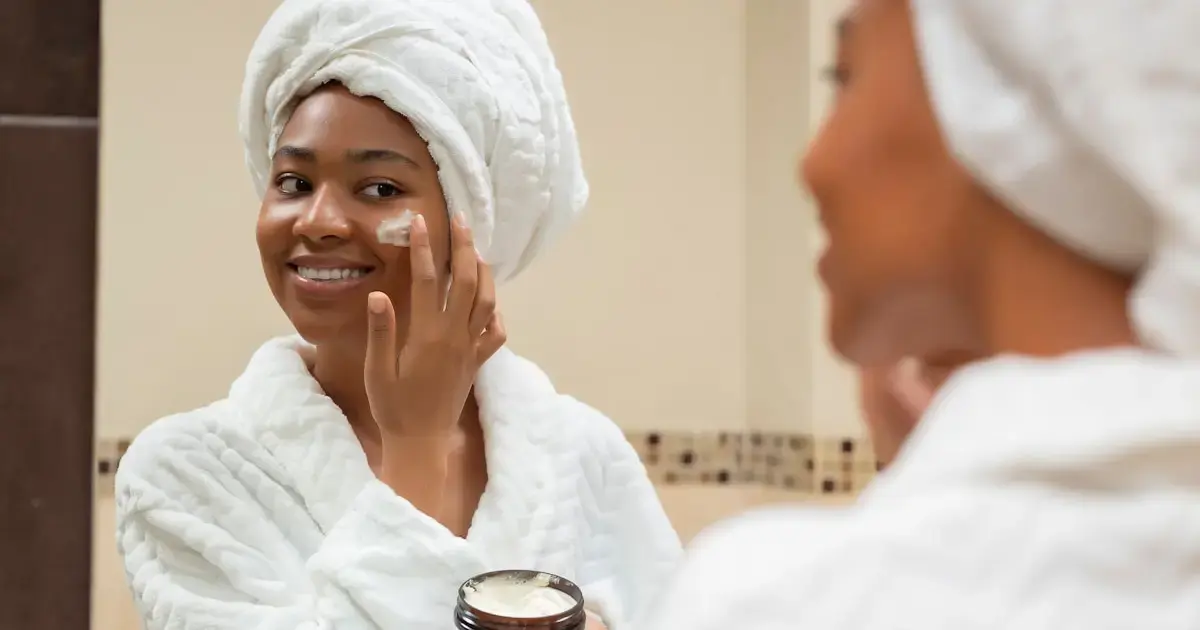 Shea butter, or karité oil, is a paste extracted from the seeds of the shea tree, native to Africa. At room temperature, it has the consistency of softened butter. This white, yellow, or cream-colored substance, with its nutty aroma, can remain fresh for up to a year without salt, and its flavor rivals that of the finest butter. This was the conclusion drawn by Scottish explorer Mungo Park, the first European to encounter this plant-based product. Although this solid oil was already among the beauty products of ancient Egyptian queen Nefertiti and Cleopatra, many modern consumers still lack information about shea butter: what it is used for and why it’s so interesting.
Shea butter, or karité oil, is a paste extracted from the seeds of the shea tree, native to Africa. At room temperature, it has the consistency of softened butter. This white, yellow, or cream-colored substance, with its nutty aroma, can remain fresh for up to a year without salt, and its flavor rivals that of the finest butter. This was the conclusion drawn by Scottish explorer Mungo Park, the first European to encounter this plant-based product. Although this solid oil was already among the beauty products of ancient Egyptian queen Nefertiti and Cleopatra, many modern consumers still lack information about shea butter: what it is used for and why it’s so interesting.
“Women’s Gold”
The largest producers of shea butter in the world are Nigeria, Senegal, and Burkina Faso. In Mali, the African tree that yields this unusual oil is called “shea,” which means “life,” while in Senegal, it is referred to as “karité.” The “oil tree” can live for over 300 years, grow up to 15 meters tall, start bearing fruit at 15-20 years of age, and produce 15-20 kilograms of nut-like fruits.
The shea tree is often called “women’s gold” because the collection, sale, and processing of its harvest are traditionally carried out by women in its native regions. All processes are done by hand: the harvested fruits are washed and cleaned of their pulp, and the extracted seeds are roasted and ground into a paste, which is then mixed until it reaches a buttery consistency.

Women have to gather fallen fruits during the rainy season and carry them home for processing over considerable distances (up to 3 km) in baskets on their heads. The fruits must then be buried in pits for at least two weeks to allow the pulp to rot, making it easier to extract the seeds. To produce 1 kg of shea butter, 20 kg of fruits must be processed, 10 kg of firewood burned, and a significant amount of water used.
The seeds are first boiled to prevent germination and then roasted continuously for four days, after which the raw material can be stored for nine months. The roasted seeds are crushed with stones, and the kernels are ground in a mortar. Water is added to the brown paste, and several women take turns mixing the mass, rinsing it repeatedly and boiling it to clarify the foam.
The trade of shea butter in its producing countries is a primary avenue for women’s entrepreneurship. The products and seeds are sold year-round at local markets or near their homes. During the dry season, when the amount of oil decreases, its price can double. It is more profitable to sell to wholesalers, who then resell the purchased batches to exporters at a markup.
Uses of Shea Butter
The main buyers of shea oil and seeds from Africa are French, British, Scandinavian, and American food companies. They meet the growing demand from cosmetic firms that produce natural cosmetics based on shea oil. However, 90% of the demand for this exotic raw material as a substitute for cocoa butter comes from chocolate manufacturers.

By purchasing seeds instead of finished products, European manufacturers utilize cheaper mechanized extraction technologies: cold pressing (crushing the seeds at temperatures up to 80°C) and extraction (the quality of the final product is somewhat reduced with this method, where oil is extracted using a solvent).
In Europe, oil obtained through mechanical processing is used for cosmetic production and for food purposes—as a raw material for margarine and as a cocoa butter substitute. For culinary use, experts recommend choosing 100% natural organic cold-pressed shea oil, as it retains all beneficial components.
The benefits of shea butter are attributed to its chemical composition. This oil is composed of 85-90% fatty acids Omega-6 and Omega-9 (linoleic, linolenic, oleic, stearic, palmitic), and contains vitamins A, D, E, F, PP, specific lipids (such as phytosterols), and terpenic alcohols. Shea butter is made up of 17% antioxidants, which explains its protective properties.
This protection extends beyond just shielding the body from free radicals and includes a well-documented anti-inflammatory effect. For centuries, Africans have used shea oil for culinary, medicinal, cosmetic, and even household purposes (as a sealant for external adobe walls, windows, and doors, karité fat is effectively used for waterproofing during the rainy season).
From Cleopatra’s Boudoir
In addition to its use in traditional African cuisine and for chocolate and confectionery production, shea oil is utilized in folk medicine in ointments for eye care and eardrums, skin rejuvenation, and treatment (thanks to vitamin E and resin esters, this remedy promotes healing of minor wounds or cracks and combats eczema and psoriasis).

The moisturizing, nourishing, and regenerating properties of this tree oil have been appreciated by African women since the times of ancient Egyptian queens Nefertiti and Cleopatra, who used the soothing agent with vitamin A to prevent stretch marks during pregnancy, for infant massage, and to nourish dry or damaged hair.
Shea butter has a subtle and pleasant aroma that blends well with fragrant essential oils, making this exotic product an indispensable ingredient in creams, balms, and shampoos. Currently, about 5% of the world’s shea butter production is designated for the cosmetic industry. Europeans also use shea butter in skincare and haircare products.
Shea butter for the face is an excellent choice as it prevents acne, effectively nourishes the skin, absorbs well, and does not leave a heavy feeling. Its zero comedogenicity indicates that it does not clog pores and is suitable for all skin types, including problematic and acne-prone skin. This product is also used in baby care products.
The benefits of shea butter for hair are based on its lipid content, which is similar to that of human hair (a type of which includes waxy ceramide molecules that regulate hydration in the skin) and its ability to retain and “seal” moisture along the entire length of the hair by forming a film from roots to tips (scientifically speaking, it helps to seal in hydration within the hair fiber).
Benefits and Drawbacks of Shea Butter
Rich in fatty acids and vitamins, shea butter restores keratin—the main component of the stratum corneum of the epidermis. This revitalizes hair. Among the benefits of shea butter for hair are protection from harmful external influences, providing elasticity, eliminating dandruff, soothing scalp itching, and restoring shine after coloring.
Shea butter for the face provides deep hydration, nourishment, softening, redness reduction, protection from cold, wind, or UV rays, prolonging tanning, cell renewal, and anti-aging care. By neutralizing oxidation, triterpenes and antioxidants in shea butter stimulate collagen production.
Cosmetic shea butter is a natural aftershave care product: it soothes irritated skin and heals cuts and nicks. In body care, shea butter alleviates flaking and dryness on hands, heels, elbows, and knees, relieves muscle pain, and positively affects inflamed joints. Just add shea butter to warm water before taking a bath.
However, alongside its benefits, shea butter may also cause harm to some individuals. It has been found that frequent use of plant oils can wash out color and lighten hair, giving it a yellowish tint. Masks with shea butter are recommended to be applied no more than once a week. Other precautions include latex allergies, which shea butter contains, and individual intolerance.
If there are no contraindications, we recommend preparing whipped shea butter for home care: melt solid shea butter (80%) in a water bath until soft, blend with a mixer while gradually adding other liquid oils (18%), place in the freezer for a minute, mix again, blend quickly, and cool rapidly, repeating this process 4-5 times. Finally, you can add fragrances (2%) for conditioning.
Photo: Unsplash
